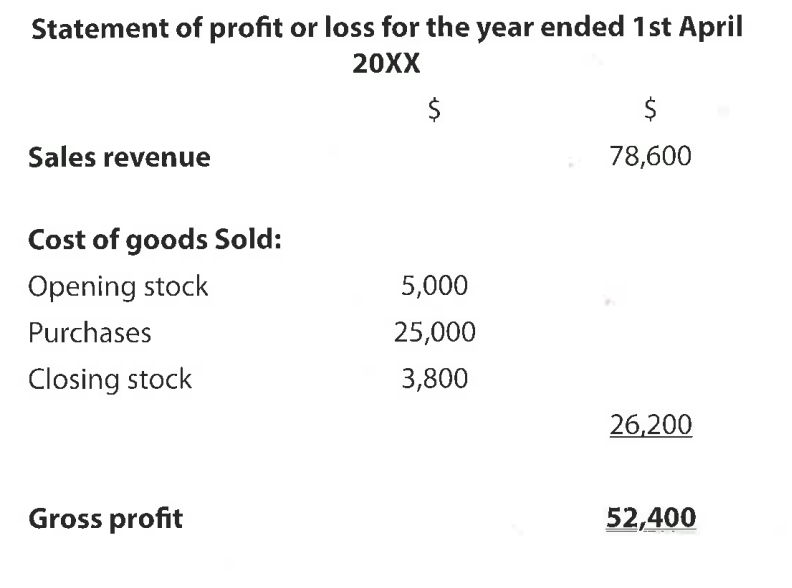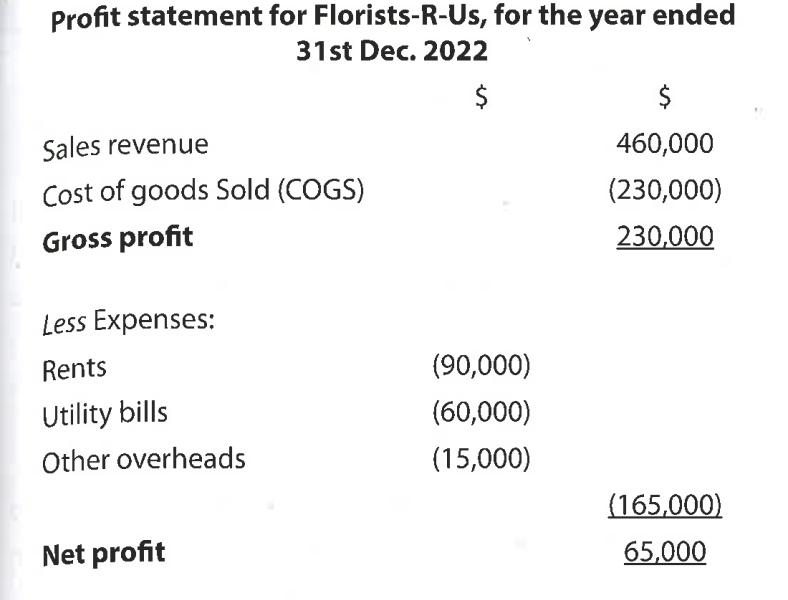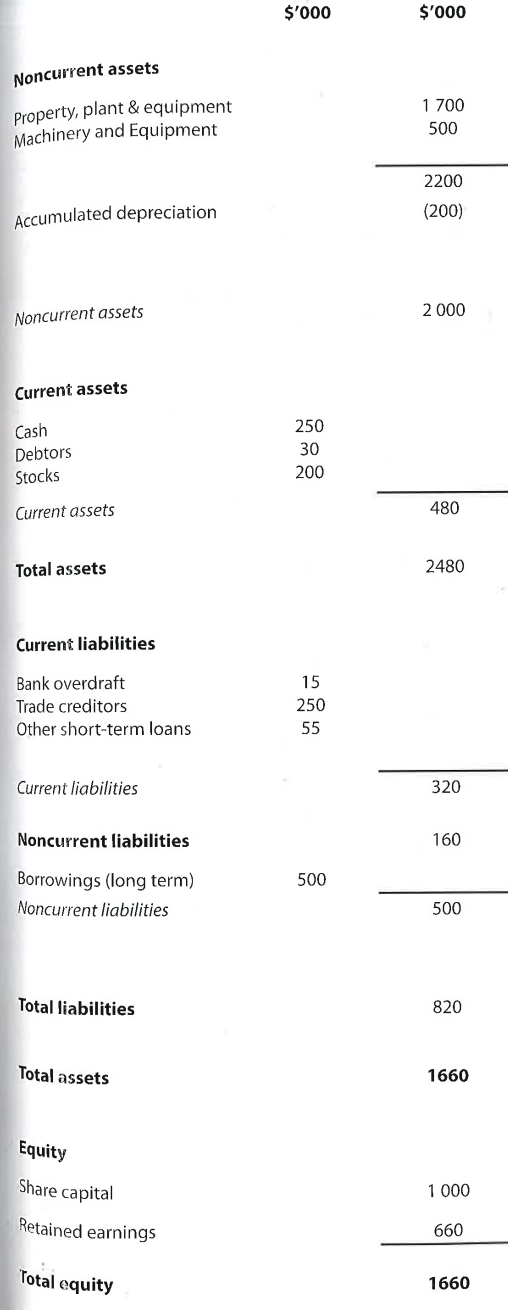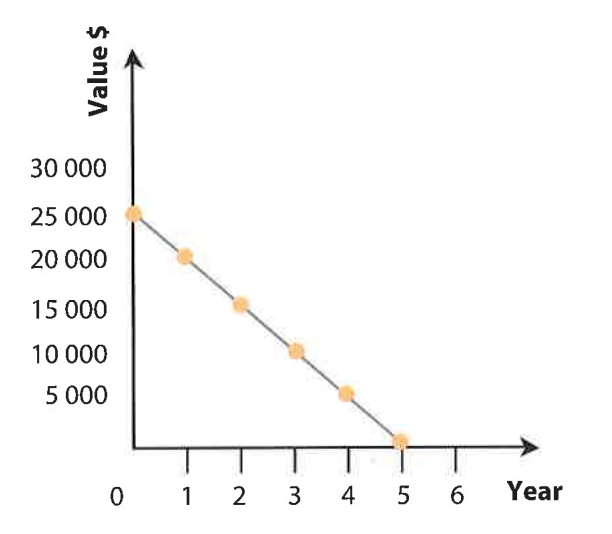3.4 Final accounts
1/130
There's no tags or description
Looks like no tags are added yet.
Name | Mastery | Learn | Test | Matching | Spaced |
|---|
No study sessions yet.
131 Terms
Final accounts
The published annual financial statements that all limited liability companies are legally obliged to report
Balance sheet
P&L account
2 types of final accounts
Balance sheet
Profit + loss account
Why are final accounts important?
Ensures all payments + receipts of a business have officially been accounted for
Legal requirement
Purpose of final accounts to shareholders
Profit + loss account / income statement
A financial record of a firm's trading activities over the past 12 months, showing all revenues, costs + revenues during this time
Main purpose of profit + loss account
Show the value of profit / loss for a business during a particular trading period
Profit
The positive difference betw a firms revenues + costs
Revenue
Inflows of money from trading activities
Costs
Outflows of money incurred by a business due to the production of g+s
What does profit act as for most business?
Incentive to do well
3 sections of profit + loss account
The trading account
The profit + loss account
The appropriation account

What does the trading account show?
Shows difference betw a firms SR + costs of producing goods sold
Sales revenue
Cost of goods sold
Gross profit
Gross profit
The difference betw the SR of a business + its direct costs incurred in making or purchasing products sold to customers
Gross profit equation
Sales revenue - cost of goods sold
Cost of goods sold (COGS) / cost of sales (COS)
The direct costs of producing or purchasing stock that has been sold to customers
Cost of goods sold equation
Opening stock + purchases - closing stock

What does the profit + loss section of a profit + loss account show?
Net profit / loss of a business at the end of a trading period
(Net) profit
The surplus (if any) that a business earns after all expenses have been paid for from the firm's gross profit
SR - COGS - expenses
Net profit equation
Gross profit - expenses = net profit
Expenses
The indirect or fixed costs of production
Eg administration charges, management salaries, insurance premiums, rent
How a business increase net profit (using the equation)?
Reduce expenses
Methods to reduce expenses
What does the final section of the P+L account show (appropriation account)?
How net profit after interest + tax is distributed
Dividends
Retained profit
How is net profit after interest + tax distributed?
Dividends
Retained profit
Dividends
Amt of net profit after i+t is distributed to shareholders
Retained profit
The amt of net profit after i+t + dividends have been paid
It’s then reinvested in the business for its own use as an internal SoF
What is retained ‘profit’ known as for a non-profit organization?
Retained surplus
Pros of P&L account
Shows profit / loss after all costs + expenses are accounted for
Doesn’t just show GP- bc if expenses higher than GP → business makes an overall loss
Business can’t survive in LT w/o making actual profit
Cons of P&L account
Shows historical financial performance → doesn’t show future performance
No international standard format for P&L account → difficult to compare P&L for diff firms in diff countries
Window dressing
Window dressing
The legal act of creative accounting by manipulating financial data to make the results appear more appealing
Cost of sales vs expenses
COS
Costs that a business can easily connect to the g/s it has produced
Aka direct costs
RM, packaging
Expenses
Costs that affect the business, not just the g/s
Aka indirect costs
Cleaning staff salaries, utilities, petrol for delivery vehicles
Balance sheet
Contains financial information about an organization's assets, liabilities + the capital invested by the owners, showing a snapshot of the firm's financial situation
3 parts of a balance sheet
Assets
Liabilities
Equity
Assets
Items of monetary value owned by a business
Cash, stocks
Non current assets (fixed assets)
Items of monetary value owned by a business
Not intended for sale within the next 12 months
Used repeatedly to generate revenue for the organization
Eg property, plant, equipment
Current asset
Cash or any other liquid asset that is likely to be turned into cash within 12 months of the balance sheet date
3 main types of current assets
Cash
Debtors
Stocks (inventories)
Cash
Money held in the business / bank
Debtors
People that owe money to the business bc they have purchased goods on credit
Value of debtors = CA bc money is owed to / belongs to the business
Stocks (inventories)
Unsold supplies of RM, semi-finished goods, finished goods
Finished stocks relatively liquid compared to RM
Liability
A legal obligation of a business to repay its lenders / suppliers at a later date
Amt of money owed by the business
Non current liabilities (LT liabilities)
The debts owed by a business, which are expected to take longer than a year from the balance sheet date to repay
Current liabilities
Debts that must be settled within 1 year of the balance sheet date
Eg bank overdrafts, trade creditors, other ST loans
3 main types of current liabilities
Bank overdrafts
Trade creditors
Other ST loans
Bank overdrafts
ST SoF- business can withdraw more from its bank account than the amount that exists
Need to be repaid quickly bc of high IR
Trade creditors
Creditors
Suppliers who allow a business to purchase g/s on trade credit.
Net assets
Show the value of a business to its owners by calculating the value of all its assets minus its liabilities
Net assets ALWAYS EQUALS equity in the balance sheet
Value of TA - TL
2 net asset equations
NA = total assets - total liabilities = equity
NA = (NCA + CA) - (NCL + CL)
An asset belongs to a business, but what does this not necessarily mean?
Doesn’t mean it has been paid for
Equity (capital + reserves)
The value of the business that belongs to the owners
2 parts of equity for limited liability companies
Share capital
Retained earnings
(sum of accumulated retained profit)
1 part of equity for sole traders + partnerships
Only retained earnings
Bc no shareholders
Share capital
The amount of money raised through the sale of shares
Shows the value raised when the shares were first sold, rather than their current market value
Retained earnings / profit
The amount of profit after interest, tax, dividends have been paid.
Reinvested in the business for its own use
In what final account does retained profit appear in?
Balance sheet
Appears as retained earnings
Profit + loss account
Kept within the business for its own use (not distributed as dividends)
From a balance sheet:
Total assets - total liabilities =
TA - TL = net assets = total equity
Means the owners own the value of the assets of the business after deductions have been made for all its debts
Balance sheet layout
NCA
CA
TA
CL
NCL
TL
NA
Equity
TE

Balance sheet of incorporated vs unincorporated business
Unincorporated business- no shareholders → share capital not part of equity
Balance sheet of unincorporated (ST, partnership) vs incorporated (LLC)
Sources of finance
Funds invested by owners
Dividends

Cons of balance sheets
Static documents
Figures only estimates of the value of assets + liabilities
Market value not same as book value
No universal format → hard to compare financial position of diff firms
Not all assets included (intangible assets, value of human capital)
Intangible assets
NCA that don’t exist in a physical form but are of monetary value + can earn revenue for a business
Legally protected by laws (intellectual property rights)
Examples of intangible assets
Goodwill
Copyrights
Brand names
Patents
Registered trademarks
How much of a firms asset value can intangible assets account for?
A large proportion
But difficult to place an objective + accurate price on them
Goodwill
An intangible asset which exists when the value of a firm exceeds its book value (the value of the firm's net assets)
Why are intangible assets not always recorded in a firms balance sheet?
Bc their value is difficult to measure in an objective / scientific way
Adding value of intangible assets on BS = window dressing to artificially inflate the value of a business
Cons of final accounts
Using only single years data in isolation → can’t find trends
HR ignored when examining final accounts
Doesn’t reveal firms non-financial priorities
Time consuming
Companies will limit the financial info they disclose
Historical accounts
Apreciation
The increase in the value of NCAs
Examples of NCA that appreciate
Property
Land
Depreciation
The fall in the value of NCAs over time due to wear and tear + obsolesence
Do NCA or CA depreciate?
NCA
2 reasons for depreciation
Wear + tear
Obsolescence
Wear + tear
Repeated use of an asset → eventually breaks down
Eg computers, vehicles
Increases maintenance costs
Obsolescence
Outdated, older versions
As newer, better products become available, the demand + value of existing NCA will fall.
Historic cost
The purchase cost of a particular fixed asset
Used to calc depreciation
How does depreciation represent the historic (purchase) cost of NCA?
Spreads the historic cost of fixed assets over their useful lifespan
On which final account is depreciation shown?
Balance sheet- accumulated depreciation
P&L- as an expense
Why does depreciation need to be recorded?
To:
Calculate the value of a business more accurately
Realistically assess the value of NCA over time
Plan for the replacement of NCA in the future
What do depreciating NCA do to the net asset value of a business?
Increase net asset value
2 methodsof calculating depreciation
Straight line method
Units of production method

Straight line method
A method of calculating depreciation that reduces the value of a fixed asset by the same value each year throughout its useful life
Which method is more commonly used to calculate depreciation?
Straight line method bc easier
3 key variables to calculate annual depreciation
Life expectancy of the NCA
Scrap value (residual value) of the NCA
Historic (purchase) cost
Life expectancy of NCA
How long it is intended to be used before it needs to be replaced
Scrap (residual) value
An estimate of the value of the NCA at the end of its useful life
Acummulated depreciation
The annual depreciation expense multiplied by the no. of years the asset has been in use